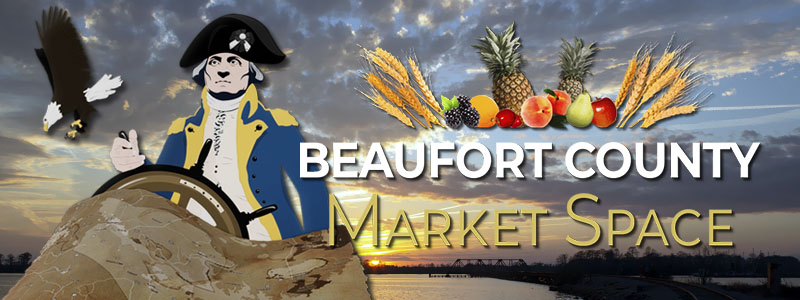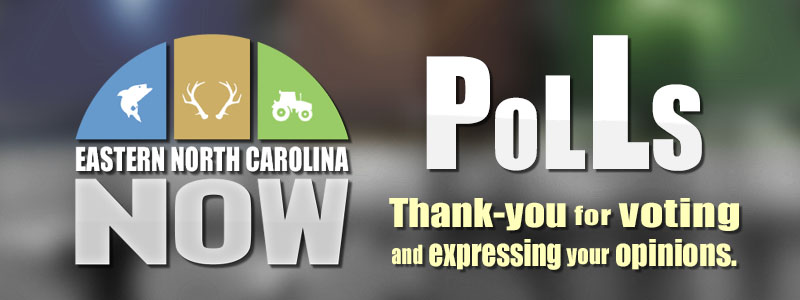Your Public Square Disclosing what is True, what is Real
Audit Takes N.C. Virtual School To Task
Publisher's note: The author of this post is Barry Smith, who is an associate editor for the Carolina Journal, John Hood Publisher.
Lax monitoring, absence of independent reviews draw criticism
RALEIGH - The N.C. Virtual Public School is doing a poor job tracking enrollment figures, a new audit says.
"Student enrollment is a key factor used to calculate NCVPS teacher pay," says the report, prepared by state Auditor Beth Wood's office. "As a result, there is an increased risk that errors could be made in teacher pay."
The report also criticizes the school for failing to monitor access to its registration system, and for the absence of an independent review of enrollment data. In addition, the audit chides the school for allowing enrollment errors in its annual report.
The N.C. Virtual Public School was established by the General Assembly in 2005, and began offering online courses to high school students in 2007. Later, the school began offering courses to middle school students. During the 2011-12 academic year, student enrollment was 49,189.
Total expenditures for the 2011-12 fiscal year were $19.7 million.
Terry Stoops, director of education studies at the John Locke Foundation, said that the audit shows that competition would be good for the state's virtual school program.
"Opponents of online virtual charter schools have claimed that online charters are not necessary because the state's virtual public school was so-well functioning," Stoops said. "This audit contradicts that depiction of the state virtual school."
Stoops said it's clear that demand is increasing for online instruction. "The state is going to need to approve online charter schools just to meet the demand," Stoops said.
According to the audit, four teachers of virtual classes also had the capability to enroll students in classes. "Since teachers' pay is based on the number of students completing their course, these four teachers would have the ability to add students' names to the roster in order to inflate the enrollment numbers that could ultimately determine their pay," the report says.
Bill Holmes, a spokesman for the auditor's office, said auditors didn't find any evidence of actual padding. "I don't think there's any ill intent in any of this," Holmes said.
The audit also chides the school for not making sure that the enrollment report includes only the number of students who complete a course, rather than the number who enrolled but later dropped the course. "There is an increased risk of errors because there was no independent review to ensure all necessary redactions were made," the audit says.
The audit recommends that the school put effective controls in place to ensure that access to the enrollment system is restricted to appropriate individuals. It also recommends that the school implement effective review procedures to align enrollment data with teacher pay calculations.
In her response, Superintendent of Public Instruction June Atkinson said that in June the school began a process of screening virtual instructors to make sure they did not have access to the registration of students. "This screening process ensures a segregation of duties and prevents fraudulent student enrollments," Atkinson wrote.
The audit cites the school for errors in enrollment totals submitted to the State Board of Education, diminishing the report's usefulness.
The report listed 49,189 students enrolled in the virtual school through local school districts, when that figure included students enrolled in school districts, charter schools, and special schools, such as the N.C. School of Science and Math and the UNC School of the Arts. The figure overstated enrollment by nearly 1,800 students.
Stoops chided the Virtual Public School office for the inaccuracy. "There is no reason why the 25-person department that runs the N.C. Virtual Public School should permit factual errors in a report to the General Assembly, as the audit revealed," Stoops said.
The audit recommends that the school enhance its review process to ensure accurate figures in its annual report.
In Atkinson's response, she blames the inaccuracies on a cut-and-paste error in the editing process. She said future annual reports would be proofread after final edits to ensure accuracy.
The audit also faults the school for not following teacher evaluation procedures. These deficiencies include one teacher performing her own evaluation, leaders not completing the evaluations of two teachers, a teacher who received an unsatisfactory rating failing to provide any feedback on how to improve performance, and another instructional leader not using the standard evaluation form.
Atkinson, in her letter, said that during the auditing process, the school implemented guidelines and weekly monitoring procedures to ensure that evaluation procedures were followed.
Go Back
Lax monitoring, absence of independent reviews draw criticism
RALEIGH - The N.C. Virtual Public School is doing a poor job tracking enrollment figures, a new audit says.
"Student enrollment is a key factor used to calculate NCVPS teacher pay," says the report, prepared by state Auditor Beth Wood's office. "As a result, there is an increased risk that errors could be made in teacher pay."
The report also criticizes the school for failing to monitor access to its registration system, and for the absence of an independent review of enrollment data. In addition, the audit chides the school for allowing enrollment errors in its annual report.
The N.C. Virtual Public School was established by the General Assembly in 2005, and began offering online courses to high school students in 2007. Later, the school began offering courses to middle school students. During the 2011-12 academic year, student enrollment was 49,189.
Total expenditures for the 2011-12 fiscal year were $19.7 million.
Terry Stoops, director of education studies at the John Locke Foundation, said that the audit shows that competition would be good for the state's virtual school program.
"Opponents of online virtual charter schools have claimed that online charters are not necessary because the state's virtual public school was so-well functioning," Stoops said. "This audit contradicts that depiction of the state virtual school."
Stoops said it's clear that demand is increasing for online instruction. "The state is going to need to approve online charter schools just to meet the demand," Stoops said.
According to the audit, four teachers of virtual classes also had the capability to enroll students in classes. "Since teachers' pay is based on the number of students completing their course, these four teachers would have the ability to add students' names to the roster in order to inflate the enrollment numbers that could ultimately determine their pay," the report says.
Bill Holmes, a spokesman for the auditor's office, said auditors didn't find any evidence of actual padding. "I don't think there's any ill intent in any of this," Holmes said.
The audit also chides the school for not making sure that the enrollment report includes only the number of students who complete a course, rather than the number who enrolled but later dropped the course. "There is an increased risk of errors because there was no independent review to ensure all necessary redactions were made," the audit says.
The audit recommends that the school put effective controls in place to ensure that access to the enrollment system is restricted to appropriate individuals. It also recommends that the school implement effective review procedures to align enrollment data with teacher pay calculations.
In her response, Superintendent of Public Instruction June Atkinson said that in June the school began a process of screening virtual instructors to make sure they did not have access to the registration of students. "This screening process ensures a segregation of duties and prevents fraudulent student enrollments," Atkinson wrote.
The audit cites the school for errors in enrollment totals submitted to the State Board of Education, diminishing the report's usefulness.
The report listed 49,189 students enrolled in the virtual school through local school districts, when that figure included students enrolled in school districts, charter schools, and special schools, such as the N.C. School of Science and Math and the UNC School of the Arts. The figure overstated enrollment by nearly 1,800 students.
Stoops chided the Virtual Public School office for the inaccuracy. "There is no reason why the 25-person department that runs the N.C. Virtual Public School should permit factual errors in a report to the General Assembly, as the audit revealed," Stoops said.
The audit recommends that the school enhance its review process to ensure accurate figures in its annual report.
In Atkinson's response, she blames the inaccuracies on a cut-and-paste error in the editing process. She said future annual reports would be proofread after final edits to ensure accuracy.
The audit also faults the school for not following teacher evaluation procedures. These deficiencies include one teacher performing her own evaluation, leaders not completing the evaluations of two teachers, a teacher who received an unsatisfactory rating failing to provide any feedback on how to improve performance, and another instructional leader not using the standard evaluation form.
Atkinson, in her letter, said that during the auditing process, the school implemented guidelines and weekly monitoring procedures to ensure that evaluation procedures were followed.
| Robert Pittengerís BOB ETHERIDGE moment | John Locke Foundation Guest Editorial, Editorials, Op-Ed & Politics | Jerry Langley and Barack Obama †-† Peas out of the same pod |
Latest Op-Ed & Politics
|
leftwing ideology can kill
Published: Friday, April 26th, 2024 @ 8:37 pm
By: John Steed
|
|
Governor expected to sign into law
Published: Friday, April 26th, 2024 @ 1:48 pm
By: John Steed
|
|
Atheist Soros, although born Jewish, was Nazi collaborator in Hungary in WWII
Published: Friday, April 26th, 2024 @ 11:58 am
By: John Steed
|
|
anti-immigration conservative nationalist beats Social Democrat incumbent 2 to 1
Published: Friday, April 26th, 2024 @ 9:19 am
By: John Steed
|
|
protecting children and parents from gender ideology promoters
Published: Friday, April 26th, 2024 @ 6:45 am
By: John Steed
|
|
Biden wants to push this in public schools and Gov. deSantis says NO
Published: Thursday, April 25th, 2024 @ 9:19 pm
By: John Steed
|
|
eve 45% of Latinos support mass deportation
Published: Thursday, April 25th, 2024 @ 12:40 pm
By: John Steed
|
|
this at the time that pro-Hamas radicals are rioting around the country
Published: Thursday, April 25th, 2024 @ 8:01 am
By: John Steed
|
|
Pro death roundtable
Published: Wednesday, April 24th, 2024 @ 12:39 pm
By: Countrygirl1411
|






















